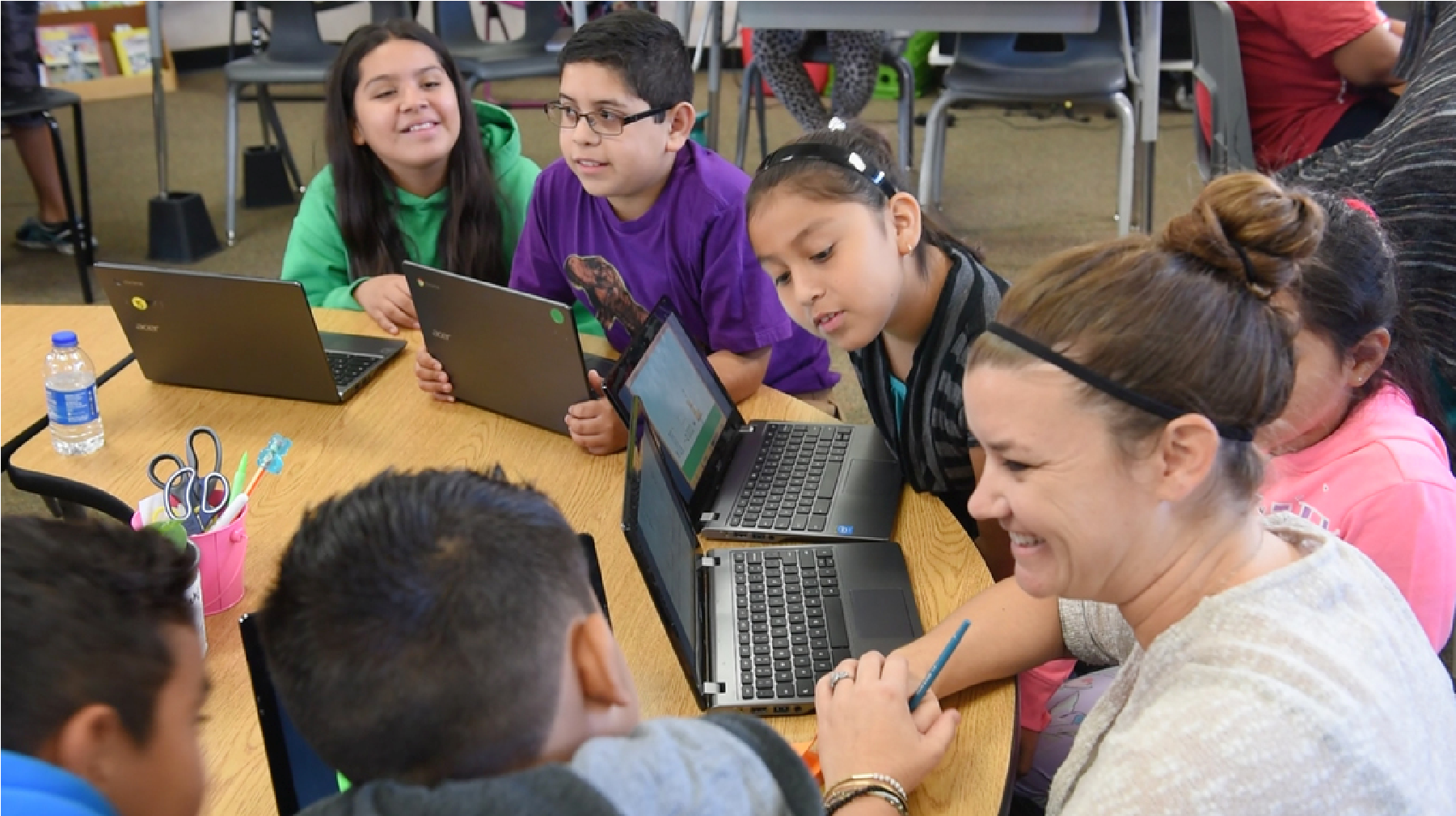As cultural and language diversity in classrooms continue to grow, it’s more important than ever for educators to ask themselves: What is it like to learn math in a different language?
English learners (ELs) are students—enrolled or preparing to enroll in an elementary or secondary school—who primarily speak a language other than English. English learners commonly come from non-English-speaking backgrounds and are currently learning the English language.
English learners make up one out of every 10 students and are the fastest-growing group in public school classrooms. In total, ELs in U.S. public schools speak over 400 different languages. When math is presented only as words and numbers on a page, ELs can miss out on crucial opportunities to understand the meaning behind the math.
Teaching math to English learners provides an opportunity to adjust teaching practices to support their needs in the classroom. Educators can uncover and utilize strategies and solutions that provide English learners equal access to learn math.

Many students, not just English learners, struggle with math. It has become an accepted part of our culture to assume that some students are more math-proficient than others. But this isn’t true. A closer examination of how students learn math—rather than how math is taught—reveals the underlying cause behind why many students struggle with math: the math language barrier.
Math language can be technical and complex, often encompassing its own vocabulary. Traditional math instruction is also language-heavy, discouraging students, causing them to doubt their abilities, and further creating a barrier to learning math. The ensuing frustration can lead to a lack of motivation among many students and may lead to over-dependence on teachers or peers to assist.
The National Mathematics Advisory Panel has suggested that math frustration and discouragement can lead to a self-fulfilling prophecy—students will continue to struggle or fall behind in math because they believe they’re “not a math person.”
Learning math can be even more difficult for English learners. This is because, in addition to learning math concepts, they are learning a math language predicated on understanding the English language.
But a language barrier does not have to mean a math barrier.

All students have the capacity to become mathematicians. Teaching math through visual representations can improve student math performance significantly.
ST Math’s patented game-based visual learning approach (i.e., manipulating objects in space and time) activates the brain’s spatial-temporal reasoning skills. As a result, it not only provides math support for English learners, it leads to a deeper understanding of math concepts for all students.
Any student can learn math through the perception-action cycle (a universal learning mechanism) and the spatial-temporal approach. Understanding how the brain learns, while leveraging the perception-action cycle and establishing foundational schemas, can unlock an approach to learning that works for English learners.
Providing English learners access to the ST Math approach is essential to their math achievement and goes a long way in supporting English learners in math class. For teachers considering instructional solutions inclusive of English learners, particularly technology-based instruction via ST Math, here are some features to look out for:
ST Math is known to remove language barriers and involves animated depictions of math concepts, using a series of puzzles that make learning math fun and engaging. It does away with the “teaching by telling” approach and encourages “learning by doing.”
For this reason, ST Math increases entry points for all proficiency levels among English learners. It provides visual models, unhindered by language, for English learners to build their mathematical understanding, creative reasoning, and problem-solving skills.
The math puzzles also offer formative feedback, allowing students to modify their thinking and refine their schemas. With no language barriers, English learners can build deep conceptual understanding and strengthen their self-beliefs—a mindset critical to their math success and reinforces their productive struggle.
English learners can also develop Social Emotional Learning skills through the problem-solving process. When language is no longer an obstacle to their math success, English learners can problem-solve without distractions. They become more engaged and can better manage their emotions while persevering through challenging problems.

Regardless of language proficiency, all students have the capacity to become adept at math. However, when math is narrowly depicted as words and numbers, English learners can miss out on crucial opportunities to understand the underlying meaning behind math problems. ST Math provides an equitable approach to learning math due primarily to the fact that it removes all language barriers.
ST Math allows on-grade level learning with accessible entry levels and scaffolded learning. When math concepts are presented without language and symbols, they become more accessible to students of all backgrounds and language proficiency levels. Teaching math to English language learners by building bridges from visual representations to numbers, symbols, and words can also drive their success on grade-level math and state proficiency tests.
While math is often also associated with anxiety, the game-based activities in ST Math can be enjoyable and provide a preferred alternative to learning math. ST Math supports students to problem solve and think critically by engaging in highly motivating math puzzles. Additionally, ST Math can also complement classroom instruction.

Whether it’s closing the math achievement gap, supporting teacher efficacy, or reinforcing family engagement, there are many ways for students to enhance their math proficiency. Math skills are the top predictor for student success, so there’s no reason teaching math can’t be more inclusive, especially for English learners. Breaking barriers—language or otherwise—to higher math achievement improves student self-belief and creates a pathway to a brighter future.
Math has been described as a universal language. Let’s ensure it lives up to that reputation.

Victor Nguyen is MIND’s Content and Community Specialist. Victor is a passionate storyteller with a penchant for creative writing. In his free time, you can find him engrossed in books, going on long hikes, or trying to meditate.
Comment